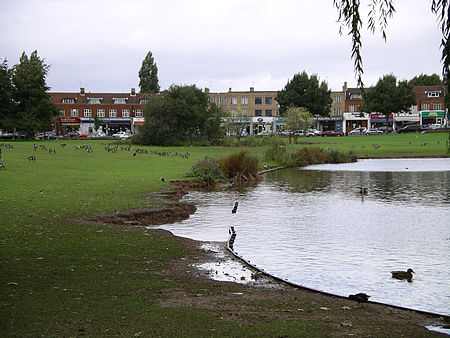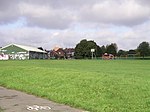Cheylesmore

Cheylesmore is a suburb in the southern half of the city of Coventry, West Midlands, England. It is one of Coventry's largest suburbs, sharing borders with Whitley and Stivichall (also spelt Styvechale) in the South, extending into Coventry city centre and bordering with Earlsdon in the North. Locally pronounced as 'Charlesmore' or occasionally 'Chellsmore', Cheylesmore has two shopping parades situated in Daventry Road and Quinton Park. These shops overlook a small park and pool known as Quinton Pool. It takes its name from Cheylesmore Manor. The original name probably derives from 'Chez Les Morts' since a huge plague pit was found during excavations after the Second World War. The city gate leading to the area was labelled as Childsmore Gate on old maps, an alternative etymology of the name.
Excerpt from the Wikipedia article Cheylesmore (License: CC BY-SA 3.0, Authors, Images).Cheylesmore
Quinton Park, Coventry Cheylesmore
Geographical coordinates (GPS) Address Nearby Places Show on map
Geographical coordinates (GPS)
| Latitude | Longitude |
|---|---|
| N 52.393 ° | E -1.505 ° |
Address
Quinton Lodge Sheltered Housing
Quinton Park
CV3 5QL Coventry, Cheylesmore
England, United Kingdom
Open on Google Maps









